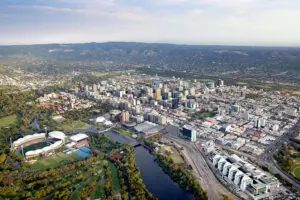The emissions reduction program is part of the suite of programs within the Quality Tourism Framework managed by ATIC.
The program has been developed in collaboration with ERC Australia, which helps small and medium businesses – those with up to 199 employees – reduce emissions and decarbonise.
ERC works on a five-step model: measuring baseline business emissions, then adjusting business practices to reduce emissions, using renewable energy sources, supporting emission removal projects – such as revegetation – and, finally, sustaining these approaches over the short and long term.
The Tourism Emissions Reduction Program will help tourism operators measure their carbon emissions and develop an emissions reductions plan.
The initiative should help business events organisers who engage tourism operators or experiences as part of their programs to reduce the overall emissions of their events.
“Australian tourism operators know the competitive advantage that can be gained by our country becoming a world leader in sustainable experiences,” said Australia’s tourism minister, Don Farrell.
“Australia’s natural wonders and deep connection to history and culture are crucial to the success of our tourism industry and drive people to our shores.
“Australians should look for tourism businesses that have made the commitment to sustainability when booking their next tour, attraction, or place to stay – every dollar spent helps protect and promote experiences that can last for generations.
“This program is good for Australian businesses, workers, our attractions and the local community.”
The federal government has also committed $8 million to support the Quality Tourism Framework.
“The tourism industry is committed to reducing our emissions by 43 per cent by 2030 and achieving net zero by 2050,” said ATIC chair, Evan Hall.
“Tourism businesses now have a tool to help them estimate and reduce emissions over a five-year plan which means these businesses can appeal to visitors who value sustainable tourism by providing accurate information about their own measures to reduce waste and carbon emissions.”
“The next generation of visitors to Australia are looking for low emission, accessible, and sustainable tourism experiences in Australia’s unique natural and cultural environment,” said Hall.




















